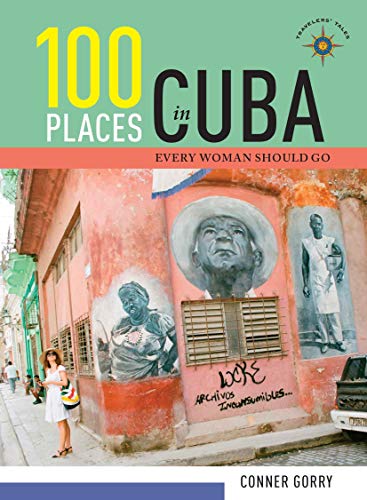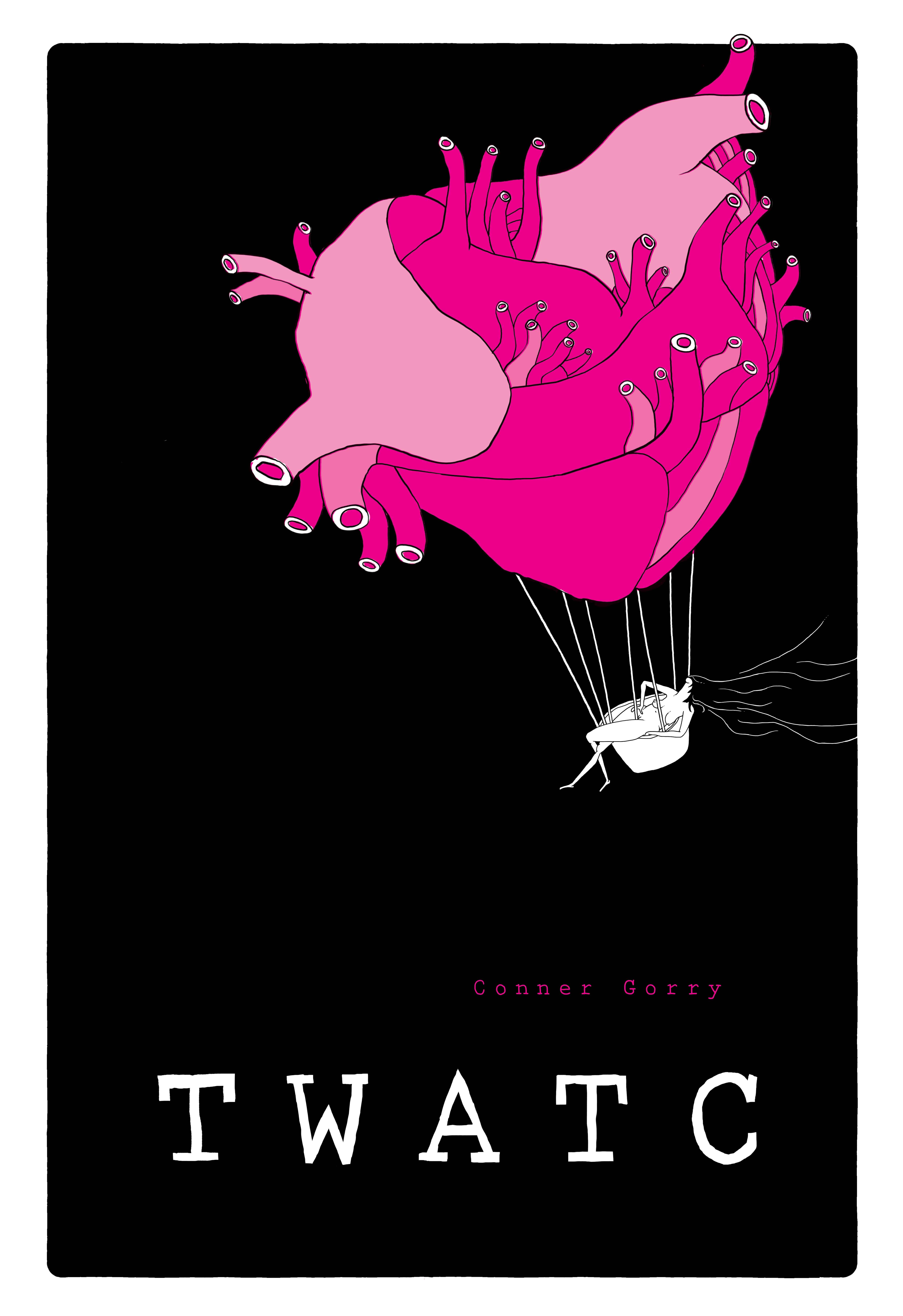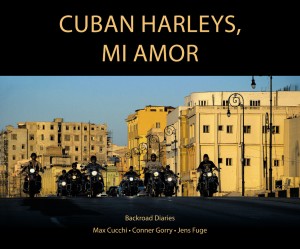[tweetmeme source=”connergo” only_single=false]
In my forthcoming article for NY Magazine, I write a bit about Havana’s newly-moneyed. Whether it comes from remittances, self-employed work, or working over tourists is irrelevant. What piques my interest (and hopefully retains yours, dear readers), is how wealth – relative as it may be – manifests itself here, how it changes behavior and tweaks norms heretofore adhered to.
Faithful followers of Here is Havana will remember my thinly-veiled diatribe against Cuban marca mania – if I’m not mistaken, I actually called my compatriots ‘logo whores.’ I repeat: not all Cubans, everywhere, but there does seem to be an inordinate amount of importance placed on logos and bling here. I understand why Cubans are attracted to shiny, pretty things, but at the same time I’m biased: one of my abiding principles holds that nothing you can buy builds character (except maybe psychotherapy). The whole status symbol compulsion and keeping up the Joneses – is it inherently bad? I don’t know, but I do know I’m hard pressed to find anything good about it.
These days status symbols are displayed with as much pride as cadres display their photo with Fidel (see note 1). Gold teeth and braces, anything Mac (even if it’s just the iconic white apple sticker), cell phones (working or not), and pure-bred dogs. It stands to reason that Cubans are drawn to perros de raza since they’re a walking (shitting and barking) status symbol.
Now, those of you of my personal acquaintance know I’m not a pet person. A tortoise, perhaps, or a crafty cat that can paw open the door and hunt down a bird when it’s hungry, I’m down with. But a dog? They’re dependent, they shed, they smell, fleas like them, and often they age poorly – farting as they lumber about on rickety bones and bump into furniture with their cataracts. Plus, they hamper travel. Sorry to Sam, Sadie, Paka, Bob, and all the other great dogs I’ve known, but when it comes to canines, I subscribe to my Dad’s axiom: ‘living with animals went out with Jesus.’
But let’s put this dog question into context: I’m sure the average Cuban doesn’t give much thought to any of this. A dog here – whether in the city or campo – means added security. Dogs keep vermin of all types at bay and sound the alarm. In Havana, I’m sure you’ve noticed, folks are very concerned about the safety of their stuff and enclose entire houses – balconies, doors, windows, all – in rejas (iron bars and gates). Even taillights on motorcycles have their rejitas; check it out next time you’re in town.
So a dog is an added source of protection. I get it. But it’s also another mouth to feed and represents all manner of unanticipated expenses like when they get parasites (and they all do) or when the heat wreaks havoc on their fur (hairless perritas chinas excepted of course). They also need to be walked, adding another task to already overworked Cuban women, who, if my observations are accurate, do most of the dog care. In practical terms therefore, I’m not convinced that the benefits outweigh the costs of keeping a dog here. But what I simply can’t get my mind around is Havana’s new status symbol: Siberian Huskies.
They are all the rage: from the grimy streets of inner Habana Vieja to the bourgeoisie boulevard of 5ta Avenida, you’ll see people trying to walk, train, and tame these über Alpha dogs. And what about the heat? Have you been here in August? Just being in your own skin is a sauna – imagine if you had a pelt adapted for permafrost. It disturbs me inordinately, so I’ve started asking around…
According to my dog trainer friend Yamel, these dogs make challenging pets under the best circumstances. They’re a bitch to train because they’re bred for dominance and it’s difficult to establish supremacy. Even Yamel – who works his magic with rowdy shepherds, disobedient Dalmatians and other maladjusted dogs – says he’d never have one for this reason.
My neighbor is case in point with her trio of Huskies. They pull their leashes taut, dragging her behind, paying her no never mind. Recently, I’ve seen her working with a trainer (another expense) in the park nearby. I’m sure she watches Cesar Milan – prime time TV fodder here – religiously. Then there’s the heat. Yamel tells me they adjust, but I’m dubious: I know of at least one retriever who died of heat exhaustion here.
I was completely taken aback on a recent visit to my dear friend Carmita to see she had acquired a Husky pup. This is an unlikely pet for an unfortunate household. She’s an 84-year old pensioner living with her college-age grandson. They get a little economic help from Miami and other points north and are church-going, so have some support, once in a while, from the congregation. But Iker – named for the Real Madrid goalkeeper – is no black market Husky; he’s the real deal. Offspring of Massimo Zar de la India and Bella Bon (I’m not making this up!), Iker was purchased at one of the periodical dog shows here (see note 2) for the exorbitant price of $200. Despite my prejudices, I put a good spin on it to Carmita.
“That’s great! Now you have company while Maykel’s in class.”
She makes that smacking, sucking sound which in Cuban means ‘bullshit.’
“He’s a pain in the ass and makes a mess of everything.”
Gotta love Carmita.
We don’t mention how much his food and care must cost. Why bother?
To be fair, the vet school here has services available in both pesos cubanos (24 to the dollar) and CUCs (one to the dollar), so are technically accessible cost-wise. The CUC section of the school is sparkling, there’s no line to wait in, and medicines are available. Meanwhile, the peso cubano section swelters with people and pets waiting their turn and the pharmacy may or may not have what your dog needs that day.
But the differences don’t end there: In the waiting room of the CUC services, snappy, pretty posters extol the benefits of pure breeds; above all, the posters underscore the beauty of these dogs. Shuffle over to the peso cubano waiting room and the script is different. Here, the posters are yellow and curling and don’t celebrate poodles, spaniels, and Afghans, but instead list the virtues of mutts, pointing up their strength, resilience, and force of character.
Pure breed or mutt? Pesos convertibles or pesos cubanos? Welcome to today’s Havana: suelta sin vacunar (on the loose, without her shots).
Notes
1. Every visit with The Comandante is documented by a state photographer. A few days after the meeting, a 6×8 matte photograph of you and Fidel arrives at your door.
2. While not Westminster, dog shows are serious business here, with breeders showing their stuff and buyers perusing their pups like johns trolling for ‘company.’ When purchased, Iker’s name was Kritop D’Spiritu Libre.











I have a Husky here in Winnipeg. They generally are very easy to train in their own environment, but I can imagine that the Havana heat would make them unmanageable. Even Canadian summers are too warm for them, they want snowstorms. Mine is at his happiest when it’s -40 out. He won’t even come inside when it’s that cold.
The worst part is their hair. Thick coats that shed a LOT. I love him, but I’d never get another.
Excuse my english, but I need to explain something. The siberians are the best ecological dogs. They have the possibilities of adaptation to any clime. They changes their hairs twice a year: one for summer time and other for winter. And also, the cuban summer is not so high than other sites in template continental climes. Just give they fresh water to drink, to put in there their noose and to refresh their plantar pillows.
Dr. Ismael Pérez G.
Zar de la India
Havana, Cuba
Estimado Doctor, muchas gracias por la información. Comentarios como los suyos están muy agradecidos. (and your English is just fine!).
Sin embargo: no son faciles como mascotas, verdad? Tengo entendido que hace falta mucha disciplina para mantenerse el dueno como “alpha dog”
Thanks for your words, Connergo. The siberians are very independents. As a wolf, they haven´t an owner, but need to live in human companion and select the best of the group to be their guide in all way or as you said an “alpha dog” to follow him. To become this chief, become a school of inteligence, patience and sweet force (never violence) and start from when their are just puppies. The bitchs starts this stage of socialization but the owner, need to take hers place and continue it to have “good boys and girls”. The continue common life make the rest. In good spanish: “cada uno en su lugar”. As they act when they are in mushing.
When you were in Cuba again, you are invited to visit “Zar de la India” and
have the experience to stay with our “wolves”. :-))
And then there are the dogs of two neighbors in your three story military apartment who bark incessantly all day long while they are at work, but you dare not complain because one allows you to use their telephone and the other their fridge because your Chinese model is either broken or needs to be de-thawed every third day.
Or the problem of taking your well-behaved, quiet daschund to visit your grandmother’s house in another town, only to be told that dogs are not allowed on the back of the truck, (climbing on board with a small gym bag, a bottle of tomato puree PLUS the stupid dog requires the acrobatic ability of Cirque de Soleil) , which in turn requires you to bribe the driver, sit beside him in the sweltering cab, and contend with his lecherous, snaggle-toothed leers and roving hands (if only the damn dog was a biter!).
And what to do with the four-legged farter when you have to travel to the quinceira of a cousin in another town? There are relatives who are not speaking to this day because the dog won out and tia stayed home.
At least the damn dog comes home at night, is loyal, doesn’t drink away half you paycheque and won’t leave you for another woman.
Oh, what people will do for love!
Thanks for this funny snippet. Until the last sentence, I thought we were on the same page!
Planning a trip to Havana in December before I go from Playa del Carmen to Mexico City. As I’m pretty allergic to dogs, maybe I should avoid it. 😛
No, but seriously, this kind of reminds me of any ‘pet fads’ we have over here. I knew someone who was insisting he wanted to get a pet monkey (Duuuuuuude, you live in Wales! It’s freezing here all the time, you live in a one bedroom flat above a tanning salon and, oh, IT’S A MONKEY). And wasn’t there the whole craze about baby alligators or something a while back? People are insane.
And then whenever disney comes out w a new animated blockbuster (nimo, 101 dalmatians), people go gaga and the species nearly collapses. I heard there was some nastiness going on in this vein around chihuahuas (or some other handbag-able canine), with breeders overbreeding and then whoops! too many mini dogs for the market to absorb.
Yes, people are insane! I count myself among the ranks!
The gente especulando, and the poor dogs- and neighbors- sufriendo..
Ay, Cuba! Like no other place on Earth. Common sense goes out the window , and impressing the neighbors, who just laugh at you anyway, becomes all important.
I’m with you 100% on this foolishness, Conner.
Yes, Ole, some folks around here do care an inordinate amount about what their neighbors think/are doing/are thinking about doing.
Which issue will your article be published in?
It’s slated for Sept 26, so….back to work, deadline looms! Look for it in the Urbanist’s column. Lots of exclusive interviews and tidbits!
Fact Check !!!
There is NO “Vet School” in Havana. The closest is in San Jose de Las Lajas.
The building that now houses a CUP and CUC clinics on Carlos III was the Veterinary School until 1976.
Down there Spanky.
In a couple of years of writing this blog, I’ve had very few errors, 0 lies, and 100% of my own experience. So I called it a vet school, it’s a clinic. Duly noted.
In Santiago everybody was crazy to get a chow-chow, the big ones. It was so sad to see these big dogs with all their fur suffering in the Santiago summer heat. They do not even take them out for a walk. But I am not better myself, when somebody offered me a nice German Shepard puppy I could not say no. Mea culpa.
I refrained from mentioning the chow chows in the post because it is just too sad: the hey day of this pedigree has past, but you see aging chows all around Havana too and they are hating it: their fur is falling out, their tongues are always lolling about, and they always look miserable splayed out on the sidewalk, beat from the heat. I can’t imagine in Santiago where it’s even hotter.
My favorite dog story has to do with a farm family in rural Ciego de Avila who have a nice little doggie named Osama bin Ladin, and they grin with SUCH pleasure when they tell this to us Americans…..
Yeah…not funny. As someone born and bred in NY and with a family member directly affected by the 9-11 attacks on the WTC, I bristle at this kind of thing. Its something that turned me off mightily about Santiago de Cuba (were it only one thing!) – everywhere my (long haired/beared) husband I went people were shouting Osama! Osama! Imagine if someone were to name their pet Posada Carriles…
I wonder Conner why there seemed to be more pro-Osama sentiment in the East? and not so much around Havana? proximity to Guantanamo?
I have no idea and haven’t been back to that part of the island since that episode with my husband (except on a stopover en route to haiti to cover Henry Reeve) .
A couple of weeks ago the BBC correspondant, Fernando Ravsberg, wrote this on the issue:
ODA A LOS SATOS
Veo en la prensa la noticia de que Yeti, una perra “sata” (1) de la provincia de Camagüey, amamantó a varios cerditos y a un cachorro huérfano. La historia se publicó en todos los medios, es que los cubanos se toman muy en serio a sus canes.
Recuerdo que naciendo el siglo llegó a mi oficina un fax informando que la perra de la embajadora de EE.UU. había sido expulsada. Lo primero que pensé fue en una ruptura diplomática expresada en términos insólitamente groseros.
Leyéndolo con más calma, comprendí que se trataba de la separación del club de Lebreles-afganos de “Habana”, la perra que pertenecía a la representante diplomática de Washington en Cuba, la sra. Vicki Huddleston.
Comenzamos a llamarnos entre colegas para tratar de comprender “este nuevo choque bilateral”. El run-run crecía mientras en la Cancillería juraban que no sabían de qué estábamos hablando. Llegó entonces un segundo fax.
Lo envía también el club de criadores de esa raza canina y va dirigido a la prensa extranjera acreditada en Cuba. Se informa que, en un acto de desagravio, la perrita fue readmitida pero a Vicki, su dueña, se le separó definitivamente.
No podía creerlo, pero varios criadores me confirmaron que se trataba de un asunto interno del club. Según su versión de los hechos, la crisis fue resultado de la rivalidad entre una señora de la alta sociedad cubana y la embajadora del “imperio”.
Al parecer la mascota de dicha señora era la estrella del club y fue opacada por la aparición de “Habana”, que centró la atención de todos. La situación se hizo intolerable y, como todo en Cuba, rápidamente se tornó política.
Imagino los discursos en el club proclamando que los perros cubanos comían con mil sacrificios y carecían de medicinas por culpa del bloqueo de los imperialistas, los mismos que ahora vienen a restregarnos sus ejemplares fuertes y sanos.
Pero lo cierto es que los perros de raza cubanos no estaban mal alimentados ni carecían de medicinas. Yo sabía que “Habana” comía del dinero del imperio pero nunca supe cómo, en medio de la crisis, se mantenía los demás perros.
Por suerte los misterios del Caribe son menos inescrutables que los caminos del Señor, así que me puse a conversar con criadores y tuvieron a bien darme el nombre del salvador, se llama “mercado negro” y cuanto menos hay mejor funciona.
Se alimenta de las arcas del Estado, del matadero salía la carne para los canes y las vacunas se compraban en los viajes oficiales. Durante la crisis de los 90 el ganado y hasta los animales del zoo caían como moscas, pero los perros de raza sobrevivieron.
Estos canes son una agresión directa al tópico informativo que dice que todos los cubanos están en la miseria. Entonces, ¿quién cría los chihuahuas, Golden Retriever, pastores, dálmatas, huskies, chau-chau o lebreles-afganos?
Pues una parte de la población con dinero suficiente como para pagar entre US$50 y US$500 por un cachorro, que alimentará después con carne de vaca y un pienso importado que cuestan respectivamente 0.80 y 2 dólares el kilo.
Claro que otra parte de los cubanos no tienen recursos para semejantes gastos, pero eso no quiere decir que no puedan tener su mascota, ellos son los dueños de los “satos”, como llaman los isleños a los perros sin raza.
Aunque en realidad decir eso es una verdadera calumnia porque ellos tienen los genes de varias razas a la vez. Esos sí que son fuertes, soportan bien las enfermedades y ninguna comida les provoca alergias, unos sobrevivientes natos.
Son como los cubanos y tal vez sea por eso que se encariñan tanto con ellos. Hay hasta un festival de perros satos en La Habana Vieja, donde uno gana por feo, otro por la cola más larga, aquel por simpático y también recibe un premio el de orejas descomunales.
Y ahí sí que no tienen la competencia del “imperio”, no hay embajador de EE.UU. que se atreva a competir con perras satas como “Yeti”, ni señoras de la alta sociedad socialista que envíen fax de repudio y organicen actos de desagravio caninos.
(1) Así se les llama en Cuba a los perros que son producto de la mezcla de diferentes razas caninas.
http://www.bbc.co.uk/blogs/mundo/cartas_desde_cuba/2011/09/oda_a_los_satos.html
“To be fair, the vet school here has services available in both pesos cubanos (24 to the dollar) and CUCs (one to the dollar), so are technically accessible cost-wise. ”
To be fair you should edit your posting. This is not true.
“In a couple of years of writing this blog, I’ve had very few errors, 0 lies,”
There is no shame in admitting errors. There is shame in not correcting them.
I repeat: it’s a clinic, not a vet school. Duly noted.
I confess I have fallen in love with many owner-less mutts in Havana over the years — it IS easier to appreciate them from a distance — and participated in at the collective feeding/adoption of a spunky little homeless sato dubbed “Proletario” who used to lounge like a lion on the concrete bench in front of the micro…Tail always wagging, even mange couldn’t get him down. He used to stand for hours, gazing at a nearby building where his beloved lived…
Many hearts were broken when he came to a tragic end beneath the wheels of a truck…
One of the funniest sights I’ve ever seen from the balcony is an elderly Cuban couple crossing the street, each carefully holding a front paw of the sato between them — as it tottered across on its hind paws!!!! unbelievable….
I have also fallen in love with a sato – unbearably cute in that little old man way some dogs have, but with a mean disposition. Sorry to hear about yours!
I’ve been to that clinic on Carlos III with my boyfriend’s dog. He has an adorable salchicha puppy. When we were there we saw a dalmatian and a pug and a few other dachshunds. I was won over by the salchichas though. My BF says, about the other breeds at the clinic…”I don’t know why they want a dalmatian or a husky…they aren’t made for Cuba…I’ve always had Cuban dogs because they are better” I joke with him that he always thinks anything “Cuban” is better..haha…even the dogs 🙂
Salchicha = hot dog = Dachsund (for our non Spanish speaking freinds)
The Salchicha is the go-to Cuban dog. And OF COURSE it’s better bc it’s Cuban!
Connergo … an update, The CUC clinic that has been spoken of here no longer exists. It has been closed down.
Thanks for the update Spanky – I never was able to track down the woman pairing up viejitos/as with dogs. Cheers.
Pingback: Backstage at Carlos Varela (& Other Religious Experiences) | Here is Havana
Recently returned from my first trip to Havana with a long list of “stuff to Google when home,” and your blog has come up several times in response. I’m now working my way through your archive, quite happy to find many of my questions answered. But the question that led me to this post is unanswered, and maybe you know (or know who to ask!): why all the salchichas? It seems like a solid 40% of Havana’s street dogs are daschunds, and most of the others are also of the long and low-slung variety. Was there a huge influx of daschunds at some point to be ratters or something? I don’t think I’ve ever seen a pure-bred daschund stray in my life, and yet they’re the most common stray in Havana! What gives?
-Liz-
Hi there. I have no idea how the salchicha first came here (readers?) but I do know they’re known as Cuba’s national dog for their ubiquity. Thanks for reading and commenting. Im glad Here is Havana has helped answer some questions about this crazy place. Come back soon!
Pingback: Pushing Your Luck in Cuba | Here is Havana
Pingback: Habana Brats | Here is Havana